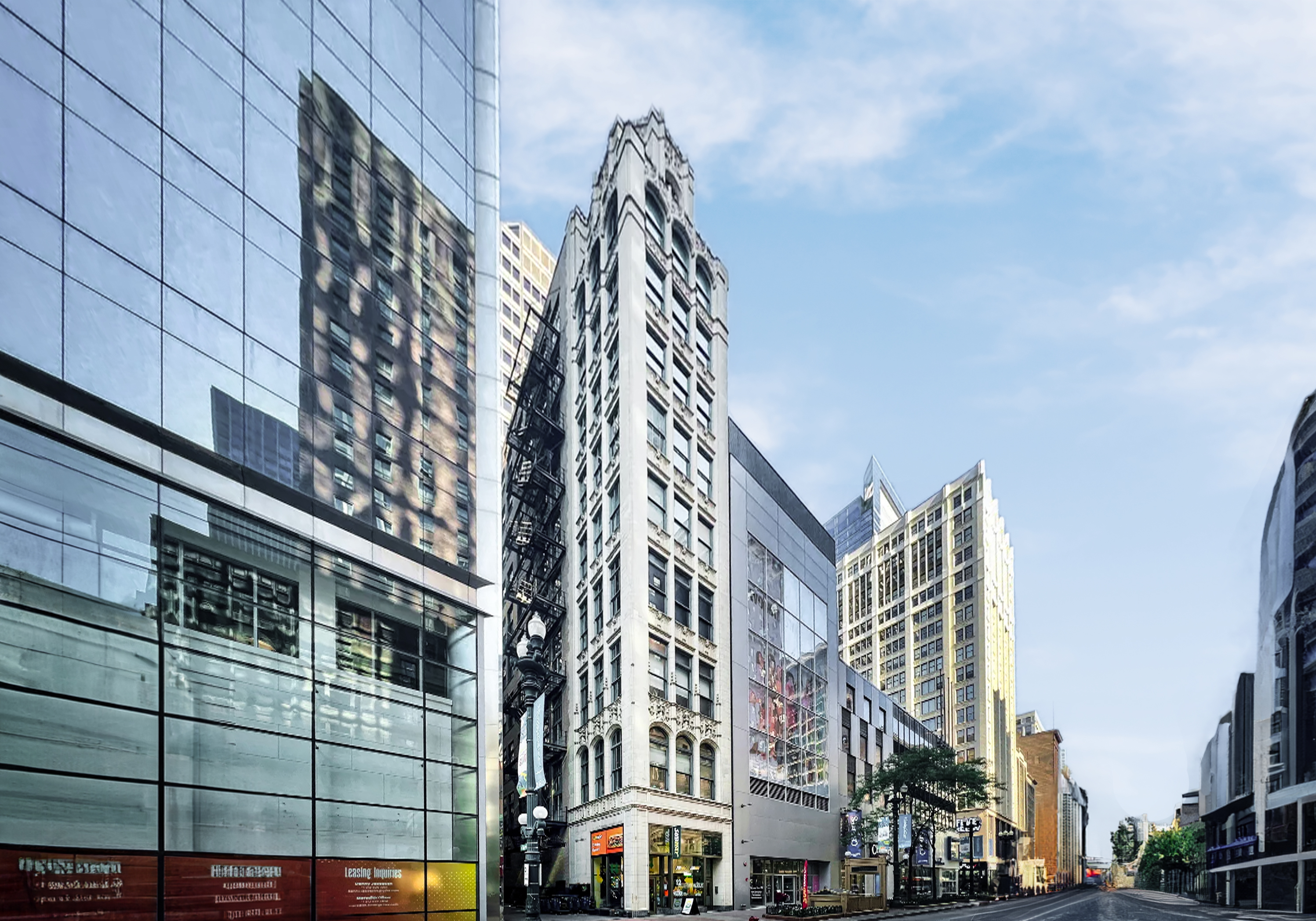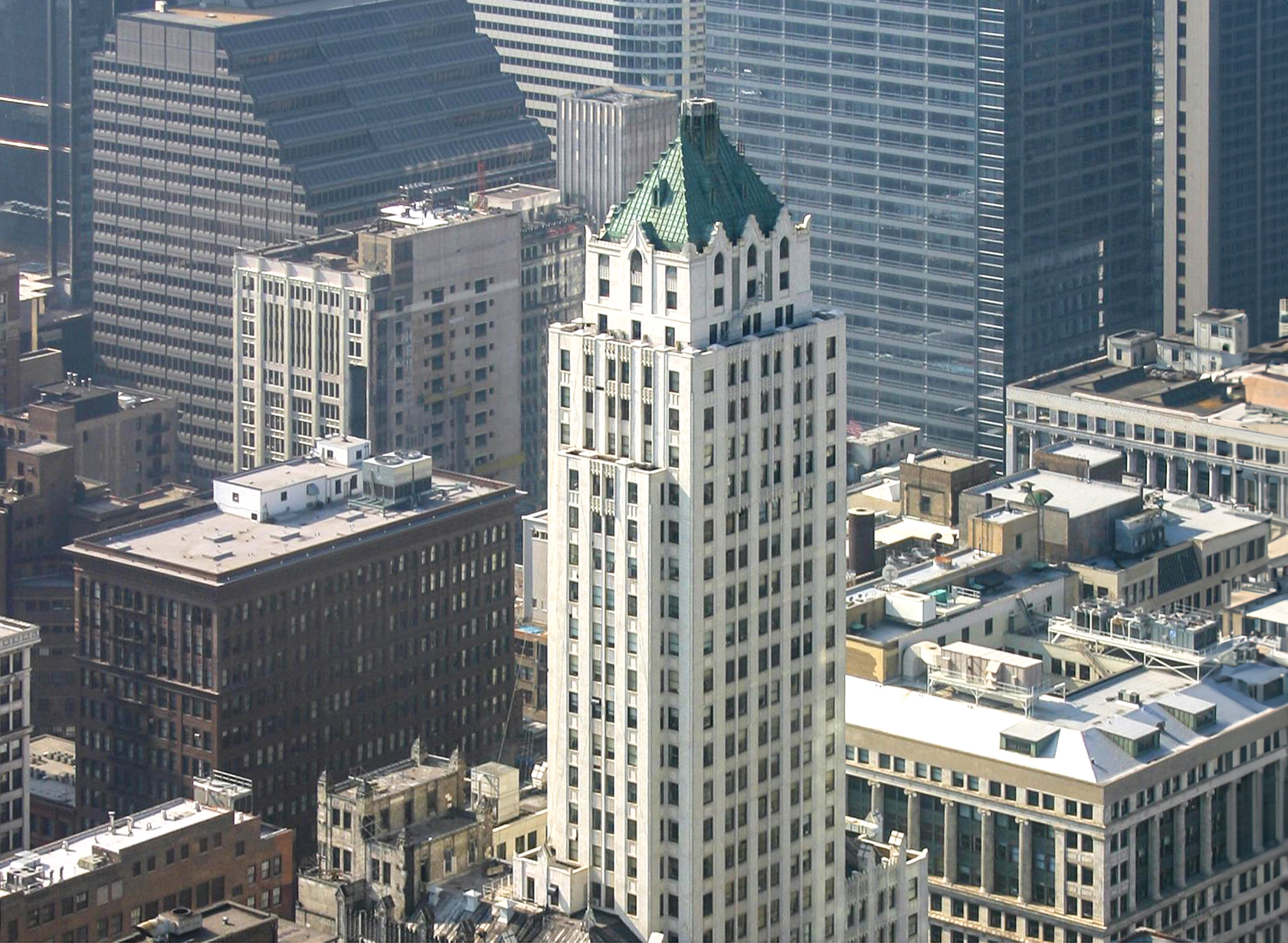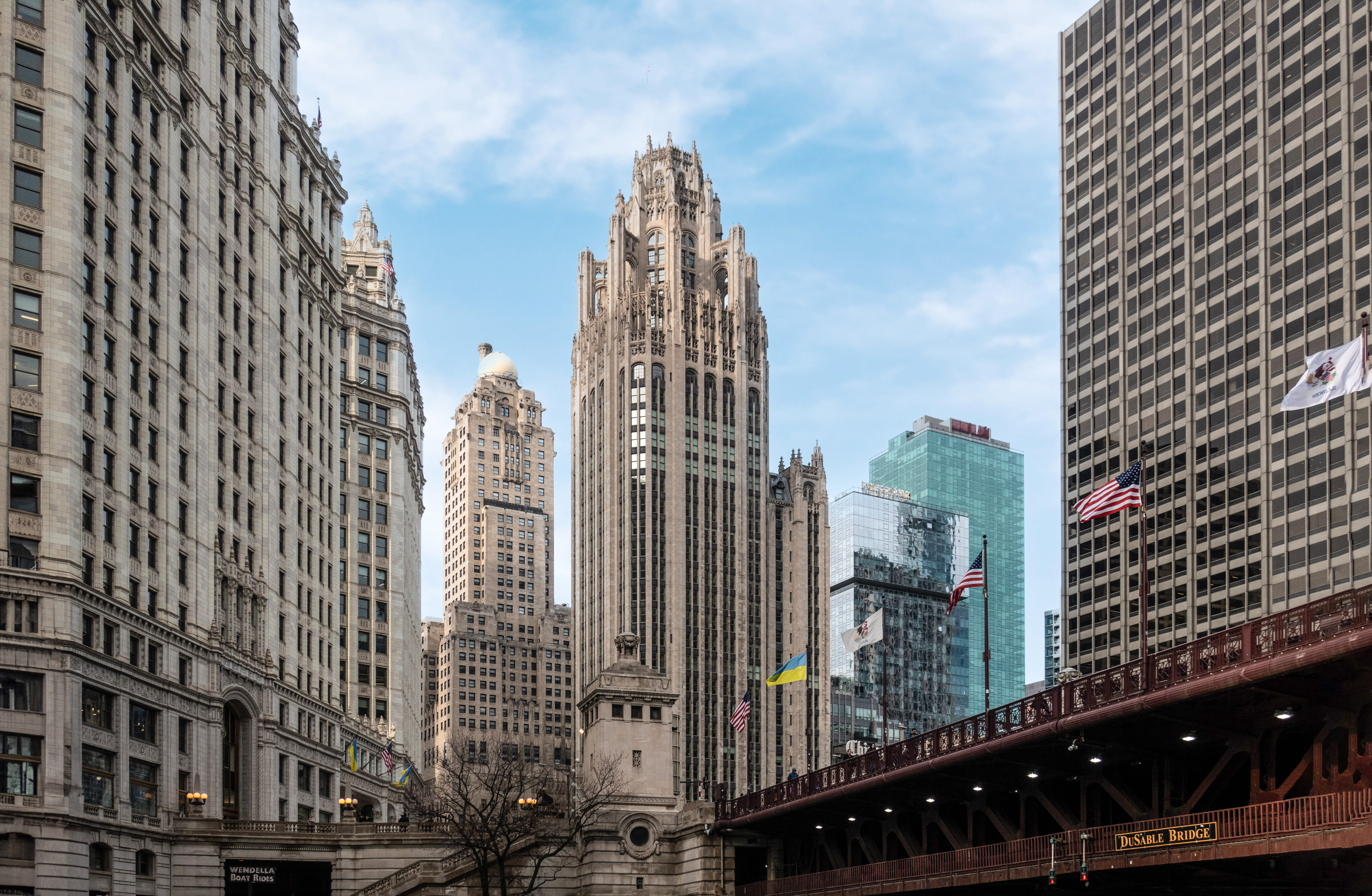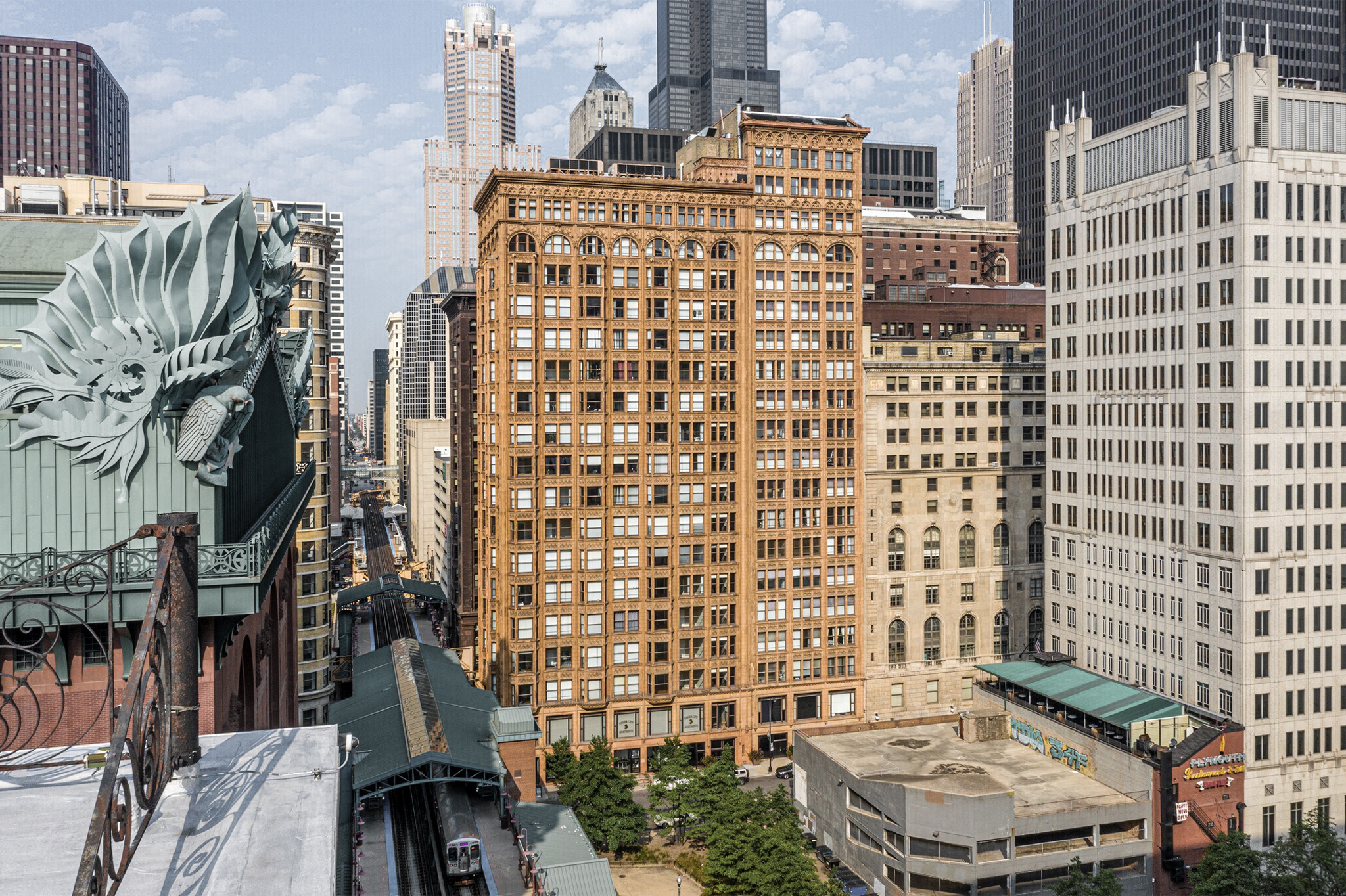The Singer Building is a Neogothic skyscraper designed by Mundie & Jensen, and built between 1925 and 1926 in Chicago, IL.
Its precise street address is 120 S. State Street, Chicago, IL. You can also find it on the map here.
The Singer Building is a structure of significant importance both for the city of Chicago and the United States as a nation. The building embodies the distinctive characteristic features of the time in which it was built and the Neogothic style. Because of that, the Singer Building was officially included in the National Register of Historic Places on February 10th 1983.
The building underwent a major restoration in 1997. The architect commissioned to undertake this restoration was Hasbrouck Hendersen Architects.







